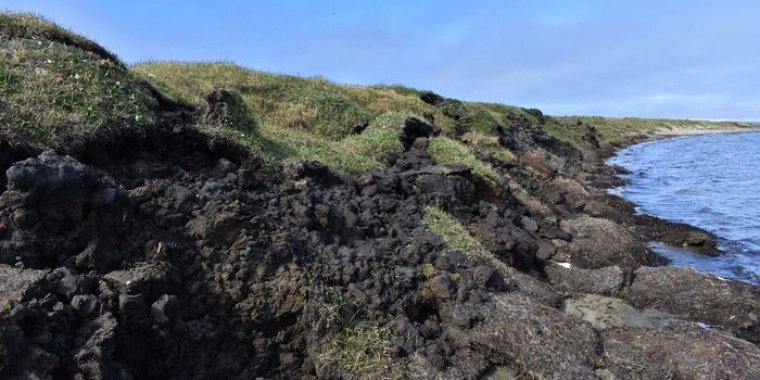| News / Science News |
Carbon dissolved in Arctic rivers affects the globe
Geoscientist Michael Rawlins of the University of Massachusetts Amherst is improving the understanding of the Arctic's carbon cycle -- the way carbon is transferred among the land, ocean and atmosphere.

Eroding cliff bluffs adjacent to Elson Lagoon near Utqiagvik, Alaska. Photo: Michael Rawlins
To better understand future trends in atmospheric carbon dioxide and climate change, a fuller picture of how carbon cycles among reservoirs in the world is needed, scientists say.
"There's been a lot of research that has looked at the vertical flow of carbon from land to the atmosphere," said Rawlins.
Examples of what affects vertical flow include burning of fossil fuels, forest fires, leaking methane gas and emissions from thawing permafrost. But there's another part of the cycle -- the horizontal.
"Far less attention has been paid to how carbon is transferred from land to the ocean via rivers," said Rawlins.
As water flows over the land and into streams and rivers, it picks up carbon, eventually carrying it to the sea.
A small, but significant amount of this dissolved organic carbon is "out-gassed" from the river water and into the atmosphere as a greenhouse gas. What remains flows into the ocean, where it becomes a key part of coastal food webs.
Yet, we know relatively little about these oceanward, lateral flows of carbon -- especially in the Arctic, where measurements are sparse and where rapid warming is leading to hydrologic cycle intensification, permafrost thaw, increased runoff and coastal erosion.
Rawlins and the co-authors modified a numerical model that accurately captures the seasonal accumulation of snow, as well as the freezing and thawing of soils, by adding in the production, decomposition, storage and "loading" of dissolved organic carbon to streams and rivers.
The model now simulates the amount of carbon running off into the region's rivers. (National Science Foundation)
YOU MAY ALSO LIKE





